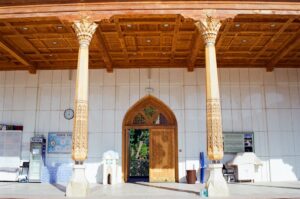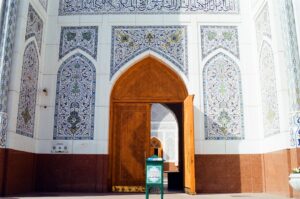Ubiquitously Uzbekistan – Bright and Early at the Minor Mosque in Tashkent

Bright and early at 6am we were back in Tashkent by train. This would be our very final day in Uzbekistan. We would be seeing some museums for this day, before we head out for our flight in the evening.

The Bon! Café

It was perhaps too early in the day, but Tashkent was already bustling with activities everywhere. We saw a lot of local life outside the train station. People were getting ready for work, and hawkers lined the street in eager display of their goods for the first business of the day.
We managed to check in our luggage at the train station, and then we made our way to a nice breakfast at a café. At 7:30am, the café was just about getting ready for the morning rush. We sat down and savored some really nice pastries, including an almond croissant, with a much-needed coffee at Boulangerie Bon! Café.
The Bon! Café is a chain and it has a prominent presence in Tashkent. We saw a couple of Bon! Cafés in this final day of touring in Tashkent.
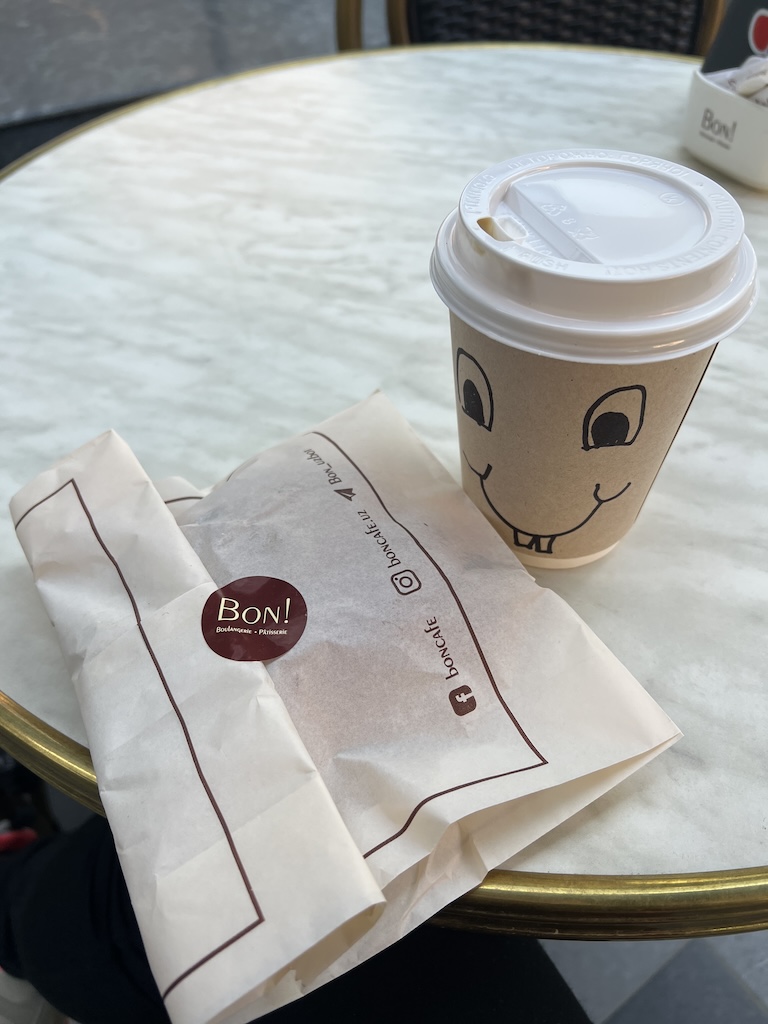
The Minor Mosque
I figured that visiting a mosque is the only thing to do in terms of sightseeing at 8am. The museums that my friend and I wanted to visit would not open until 10am.
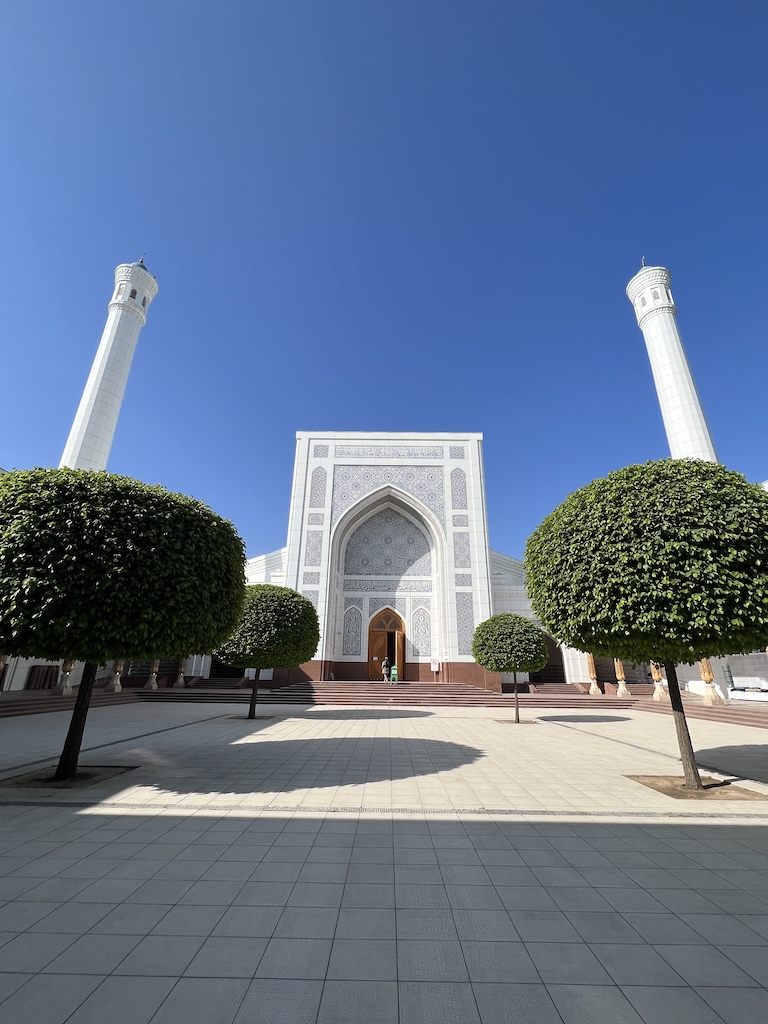
The Minor Mosque is a new mosque in Tashkent. Construction completed in 2014 before the Eid al-Fitr holiday. It has the capacity of accommodating 2,500 prayers at once.
Known as the “White Mosque” in Tashkent, the Minor Mosque lived amply up to its name on the day of our visit. Its white marble exterior exuded an air of holiness. It stood pure, speckless and sparkly under the brilliance of the sun’s early rays. There are two minarets in the height of 38 meters. The structure consists also of two large portals, beautifully decorated with geometric patterns in blue and white, as well as Quran scripts.
An online source had this to say about the Minor Mosque, “The interior of the mosque is decorated in Naqsh style, with Quranic and other texts. Designed to hold more than 2,400 people, the mosque is divided into the open front of the terraces and a huge domed hall with a gilded mekhrob (niche indicating Mecca) decorated with Quranic texts.” (legacy.uz).
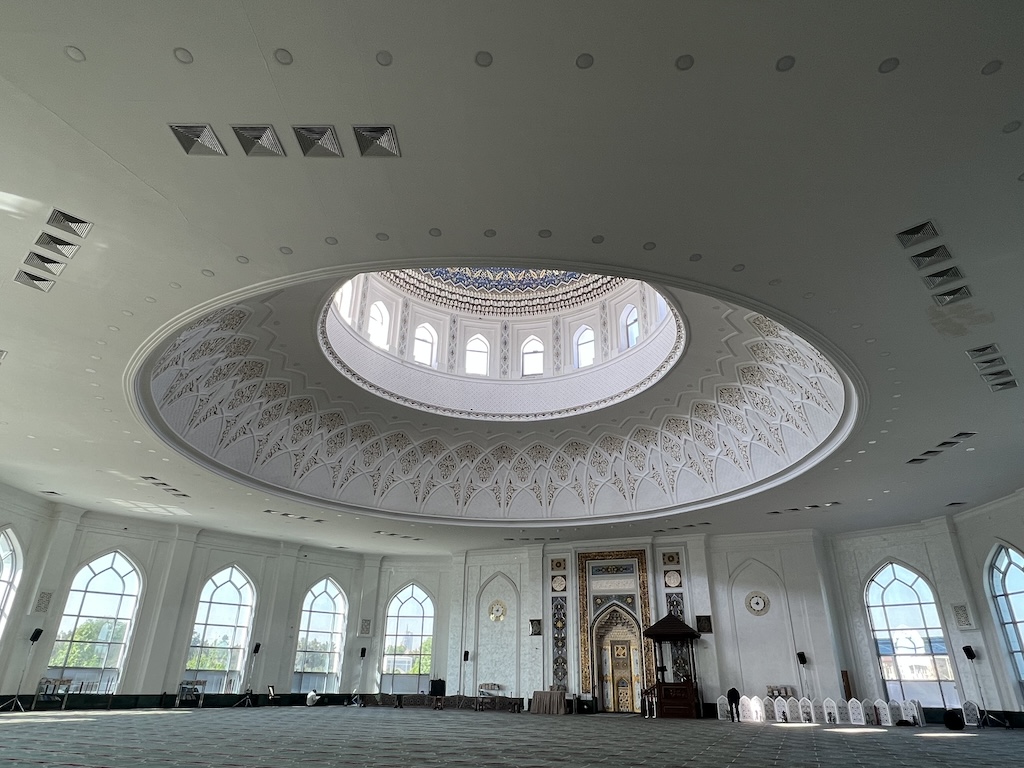
Although Uzbekistan is not considered fundamentalist, as an Islam country, the faith is well alive and practiced in Uzbekistan. The sinews of faith do bind the cultural fabric of the Muslim majority in Uzbekistan. This fact is seen when we witness the prayers at the mosques in the country.
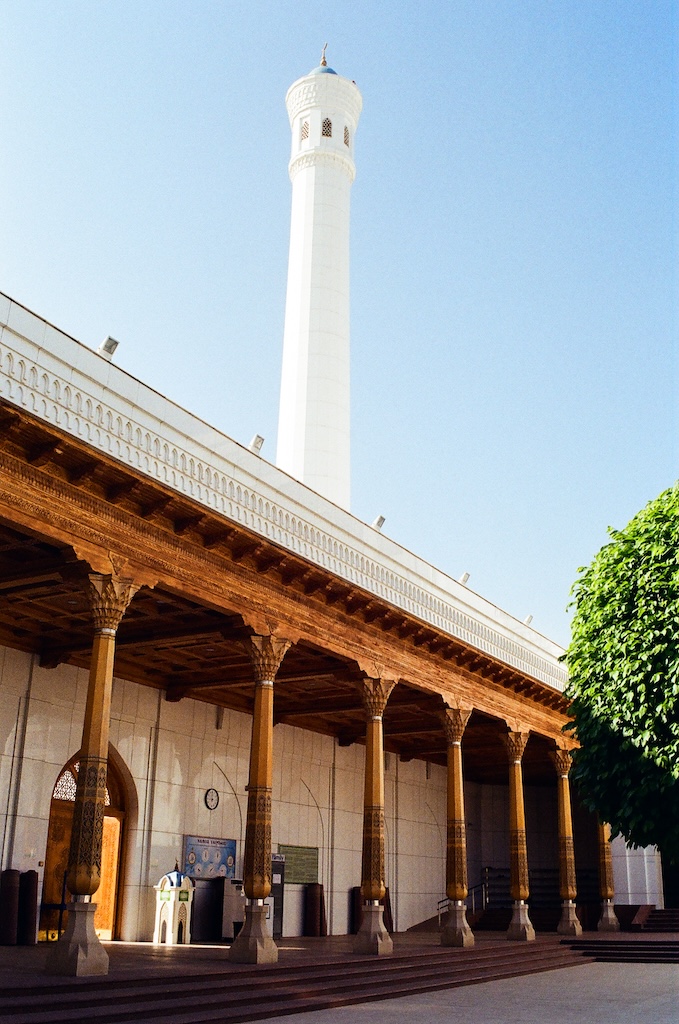
The day was still young. There were but just a couple of prayers there at the White Mosque at 8am. We were thankful because nobody bothered with whether we could indeed enter the men’s prayer hall at that hour. We did know that women are off bounds in the men’s prayer hall, but we looked briefly inside, in the most respectful manner that we could.
The men’s prayer room lies beneath the stately dome, its grand, decorated interior commanded solemnity. I figured that it would be just as fine if I said my Christian prayers at this venue. Be it the same Christian God / Allah or not, the Minor Mosque presented a kind of serene environment that inspired a longing for spirituality.
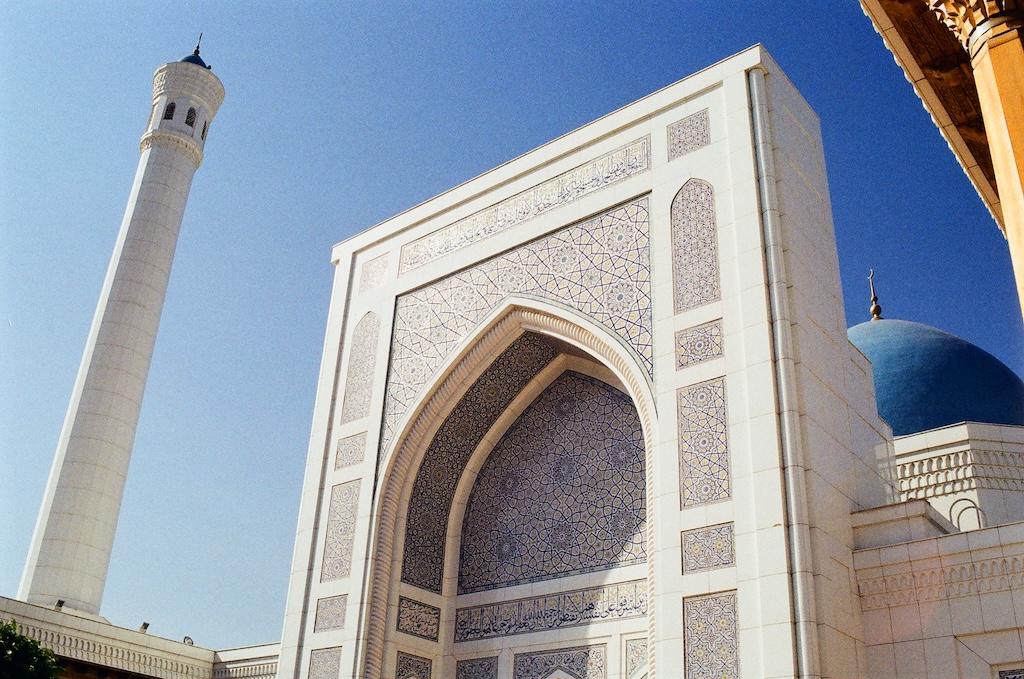
A word must be given here about the name of the mosque. To English speakers one would associate the Minor Mosque with the size of the mosque, and naturally wonders if there is indeed a “grand mosque” or “major mosque” as its counterpart. The Minor Mosque’s name is actually a geographical reference, as this part of Central Asia was known as Asia Minor in the ancient days. The Minor Mosque is, in fact, one of the largest mosques and religious centers in Tashkent and Uzbekistan. When a religious structure has a name that refers to the name of the region, you know it is intended to be a place of significance, and by no means is it “minor” in the common understanding of the word.
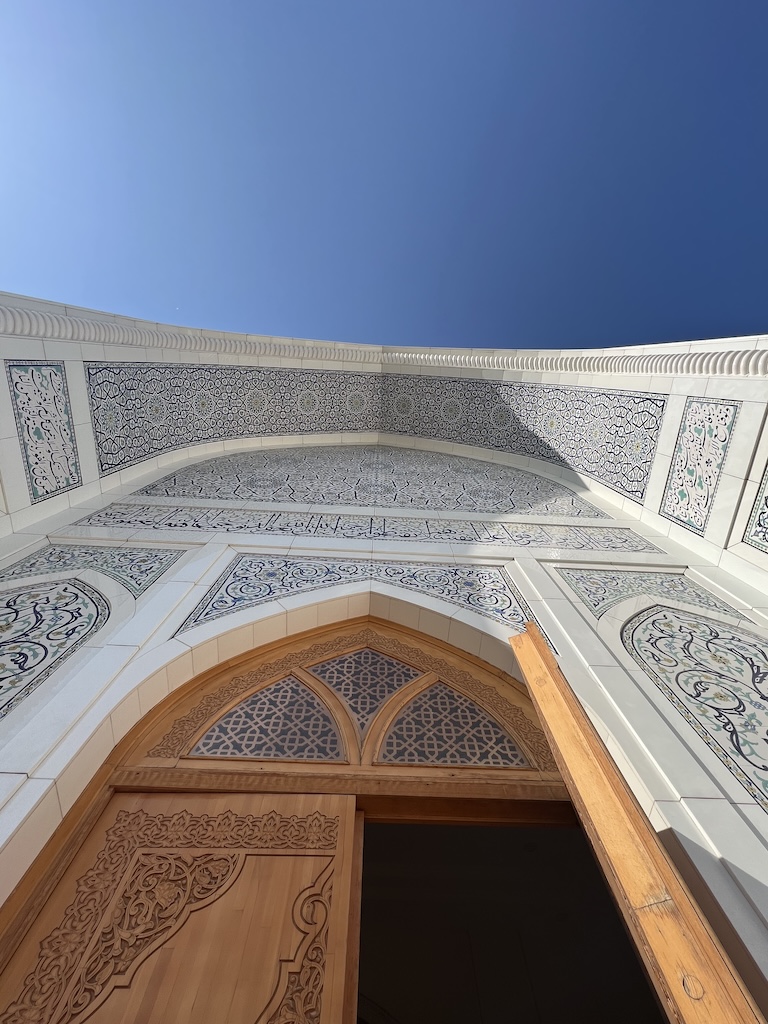
Sources
Legacy.uz, The Minor Mosque.



